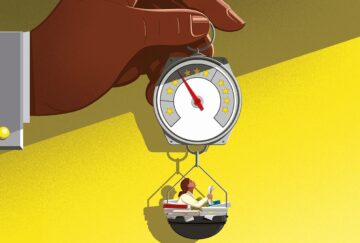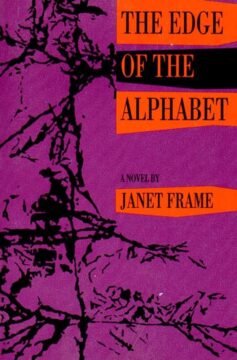Laura Tran in The Scientist:
 The lungs are a prominent target for cancer metastasis. Traditional drug delivery methods rely on passive diffusion, but Joseph Wang and Liangfang Zhang, both nanoengineers at the University of California, San Diego, wanted to test active and targeted systems. In a new study, the duo explored the potential of using green algae, Chlamydomonas reinhardtii, as a promising platform for drug delivery because it self-propels, carries cargo on its surface, and is biocompatible.1 “This active propulsion plays an important role in improving the efficacy,” said Zhang.
The lungs are a prominent target for cancer metastasis. Traditional drug delivery methods rely on passive diffusion, but Joseph Wang and Liangfang Zhang, both nanoengineers at the University of California, San Diego, wanted to test active and targeted systems. In a new study, the duo explored the potential of using green algae, Chlamydomonas reinhardtii, as a promising platform for drug delivery because it self-propels, carries cargo on its surface, and is biocompatible.1 “This active propulsion plays an important role in improving the efficacy,” said Zhang.
Their findings, published in Science Advances, described the development of biohybrid microrobots from green algae laden with chemotherapeutic drugs which reduced lung metastasis burden and prolonged survival time in mice.2 Enhancing microalgae with additional functionalities could further improve drug delivery strategies.
More here.
Enjoying the content on 3QD? Help keep us going by donating now.

 The term ‘REF-able’ is now in common usage in UK universities. “Everyone’s constantly thinking of research in terms of ‘REF-able’ outputs, in terms of ‘REF-able’ impact,” says Richard Watermeyer, a sociologist at the University of Bristol, UK. He is referring to the UK Research Excellence Framework (REF), which is meant to happen every seven years and is one of the most intensive systems of academic evaluation in any country. “Its influence is ubiquitous — you can’t escape it,” says Watermeyer. But he and other scholars around the world are concerned about the effects of an extreme audit culture in higher education, one in which researchers’ productivity is continually measured and, in the case of the REF, directly tied to research funding for institutions. Critics say that such systems are having a detrimental effect on staff and, in some cases, are damaging researchers’ mental health and departmental collegiality.
The term ‘REF-able’ is now in common usage in UK universities. “Everyone’s constantly thinking of research in terms of ‘REF-able’ outputs, in terms of ‘REF-able’ impact,” says Richard Watermeyer, a sociologist at the University of Bristol, UK. He is referring to the UK Research Excellence Framework (REF), which is meant to happen every seven years and is one of the most intensive systems of academic evaluation in any country. “Its influence is ubiquitous — you can’t escape it,” says Watermeyer. But he and other scholars around the world are concerned about the effects of an extreme audit culture in higher education, one in which researchers’ productivity is continually measured and, in the case of the REF, directly tied to research funding for institutions. Critics say that such systems are having a detrimental effect on staff and, in some cases, are damaging researchers’ mental health and departmental collegiality. J
J The central gag of Slough House, the organization, is that the worst spies in London have been thrown together in one building and punished with terrible, useless jobs. When MI5 rookie River Cartwright is sent to Slough House, for example, he’s put to work sorting through garbage he steals from bins. When he asks Jackson Lamb, his boss, what he’s meant to be looking for, Lamb cracks, “The remnants of a once promising career.”
The central gag of Slough House, the organization, is that the worst spies in London have been thrown together in one building and punished with terrible, useless jobs. When MI5 rookie River Cartwright is sent to Slough House, for example, he’s put to work sorting through garbage he steals from bins. When he asks Jackson Lamb, his boss, what he’s meant to be looking for, Lamb cracks, “The remnants of a once promising career.” I
I S
S What is a novel, or any work of art, but the product of its time, of commerce? What is it but another colorful consumer unit, to be slid dutifully on a shelf or hawked through the internet? I’ve been mulling, of late, actions and reactions, the trope of the lone genius and the trope of systems. One held very long in the culture before being defenestrated, in academia at least, over the last several decades. The other is now dominant—at least, among those in the know, those who still analyze literature. In a systems conception, the genius of creation is disregarded and dismissed; no lone spark could truly emerge, no individual could labor, by herself, to write the novels, poems, or plays that endure across the ages, or even get remembered a decade after publication. Christian Lorentzen’s
What is a novel, or any work of art, but the product of its time, of commerce? What is it but another colorful consumer unit, to be slid dutifully on a shelf or hawked through the internet? I’ve been mulling, of late, actions and reactions, the trope of the lone genius and the trope of systems. One held very long in the culture before being defenestrated, in academia at least, over the last several decades. The other is now dominant—at least, among those in the know, those who still analyze literature. In a systems conception, the genius of creation is disregarded and dismissed; no lone spark could truly emerge, no individual could labor, by herself, to write the novels, poems, or plays that endure across the ages, or even get remembered a decade after publication. Christian Lorentzen’s  But I’d like to turn, at least at the outset, to a consideration of the sheer artistry of Morrison’s film, how even though its pacing is entirely dictated by the inevitable facticity and specificity of the tick-tock of the film’s method (all Morrison has done is to expertly align the time-signatures of a wide array of simultaneously running cameras and then cut in and out amongst them, guiding the viewer’s attention across a shifting grid of all that simultaneity), it is still remarkable how many editorially flecked or at any rate consciously discerned and foregrounded themes nevertheless emerge.
But I’d like to turn, at least at the outset, to a consideration of the sheer artistry of Morrison’s film, how even though its pacing is entirely dictated by the inevitable facticity and specificity of the tick-tock of the film’s method (all Morrison has done is to expertly align the time-signatures of a wide array of simultaneously running cameras and then cut in and out amongst them, guiding the viewer’s attention across a shifting grid of all that simultaneity), it is still remarkable how many editorially flecked or at any rate consciously discerned and foregrounded themes nevertheless emerge.  On its surface, the book is deceptively simple. At first hating Svalbard and seeing only bleak desolation, she undergoes a change, learning a great deal about herself, humanity, and the wild in the process. This is a cliched appraisal of the book, but part of its charm is how clearly these beats are telegraphed, and how skillfully she delivers on what you already suspect is coming.
On its surface, the book is deceptively simple. At first hating Svalbard and seeing only bleak desolation, she undergoes a change, learning a great deal about herself, humanity, and the wild in the process. This is a cliched appraisal of the book, but part of its charm is how clearly these beats are telegraphed, and how skillfully she delivers on what you already suspect is coming. The same week this new two-volume edition of Charles Baudelaire’s Œuvres complètes arrived in bookshops, Spotify unveiled a new advert in the Paris Métro. It read: “You knew Le Spleen de Paris, here’s the Spleen of La Courneuve”. In the heart of the Seine-Saint-Denis banlieue, La Courneuve is a few miles north of the centre of Paris, where Baudelaire was born and mostly raised. On the other side of the périphérique ring road, it is where Jules Jomby’s family moved from Cameroon when he was six. Jules grew up in the blocks of council flats called the Cité des 4000, famously profiled in Jean-Luc Godard’s Deux ou trois choses que je sais d’elle (1967). Later, Jules was to adopt the stage name Dinos as he launched a successful rap career; later still, he was to draw inspiration from Baudelaire on his track “Spleen”, from his first studio album, Imany (2018).
The same week this new two-volume edition of Charles Baudelaire’s Œuvres complètes arrived in bookshops, Spotify unveiled a new advert in the Paris Métro. It read: “You knew Le Spleen de Paris, here’s the Spleen of La Courneuve”. In the heart of the Seine-Saint-Denis banlieue, La Courneuve is a few miles north of the centre of Paris, where Baudelaire was born and mostly raised. On the other side of the périphérique ring road, it is where Jules Jomby’s family moved from Cameroon when he was six. Jules grew up in the blocks of council flats called the Cité des 4000, famously profiled in Jean-Luc Godard’s Deux ou trois choses que je sais d’elle (1967). Later, Jules was to adopt the stage name Dinos as he launched a successful rap career; later still, he was to draw inspiration from Baudelaire on his track “Spleen”, from his first studio album, Imany (2018).